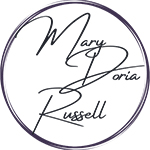Reviewed for the Cleveland Plain Dealer by Mary Doria Russell, April 8, 2012:
Novels. Symphonies. Wonder drugs. Scientific breakthroughs. Live performances that bring you to tears. That moment when a bat launches a ball toward the bleachers with a swing so sweet, it takes your breath away.
All these miracles of endeavor have something in common: their creators quit. Repeatedly. They really, truly gave up, often howling in frustration, but then — a few hours later — the solution was just there. The flash of insight; the connection no one else had ever noticed; a sense of how to adjust the hands. And they rushed back to their work.
Howling despair is a necessary part of the creative process, according to Jonah Lehrer, whose wonderful book “Imagine” is about how creativity works — not how it happens, but how it works. This book is, in some sense, a how-to manual. As such, I can recommend it: Lehrer validates and elucidates patterns I’ve gradually come to rely on, during 15 years of scientific research and 20 years of writing fiction.
Treading lightly though contemporary research in neurophysiology, Lehrer begins with the habits we generally learn in junior high. Study. Memorization. Practice. Nobody skips or avoids the left brain’s plodding, sensible efforts to learn the basics, not even Beethoven or Einstein. But geniuses hit walls, and the rest of us do, too — repeatedly, if the project is a large one. When something is in the way, Lehrer writes, the left hemisphere’s well-meaning attempts to push it aside will inevitably fail.
Trust that frustration, advises Lehrer advises, a Rhodes scholar and editor at Wired Magazine. Don’t coffee up and double down on your insoluble problem. To go forward, step sideways. (Very zen, but it works.) Set up the conditions for your logical left hemisphere to get out of your right hemisphere’s way. Take a nap. Do the laundry. Don’t get plastered, Lehrer warns, but a drink might actually help.
Ever wonder why your best ideas come when you’re just dozing off, or waking up, or standing in the shower? Because, Lehrer writes, if you leave it alone, your dreamy, relaxed right brain wanders off on its own and is free to notice an unexpected connection. Suddenly, you simply know. Lehrer outlines neurophysiological reasons for this phenomenon, but his message is: recognize that pattern and trust that process.
When the object of creation exists — in a lumpy, semi-functional, first draft, prototype way – you’ll need to shift again, this time to the front end of the brain, which delights in details and getting sequences right. Drugs like caffeine, which sustain focus, can help during this phase, but the real powerhouse is the neurochemical dopamine, which makes it intensely rewarding to seek and destroy any word or note or number that stands between you and something elegant and beautiful. In that state of mind, perfection is more desirable than food or rest. Clear the decks and enjoy the focus until you’re too blitzed to see straight.
“The question … is how to adjust our thought process to the task at hand,” Lehrer writes. “How does anyone know when to listen to the prefrontal cortex instead of unleashing the right hemisphere? When is it time to daydream and take warm showers, and when is it better to drink another cup of coffee?”
This book sharpened my understanding of creativity while working on a long, complex project — like my sixth novel. With humor and energy, Lehrer draws unexpected lessons from organizations that are machines for creativity: 3M, Second City and Pixar. Telling good stories, moving gracefully from neurophysiology to sports, from the humanities to science, from business to poetry, he lets us eavesdrop on the creative processes of the obscure and the famous. He lets us look over the shoulders of Yo Yo Ma, Bob Dylan and Ruth Handler, who came up with “Barbie,” to see how others transform practice, frustration, insight and persistence into artistry and industry.
“Imagine” is a wonderfully entertaining and useful book, exhilarating and instructive in equal parts.
